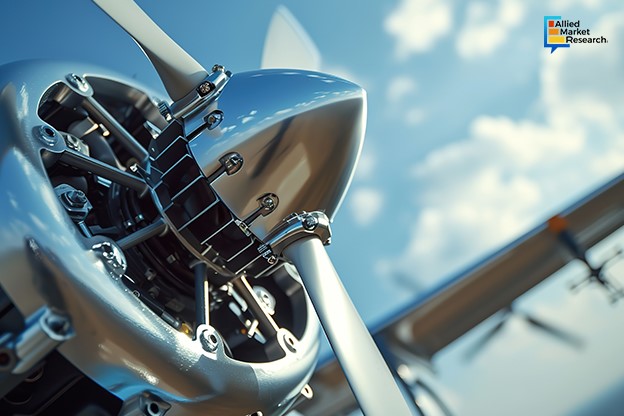What Advances in Aerostructures Can Transform Aerospace Manufacturing Prominently?

12 Mar
2024
Highlights:
- Introduction
- Recent advancements in aerostructures
- Popular metals used in aerospace manufacturing
- Profitable alliances made by top players in the domain
Aerostructures are essential components in manufacturing an aircraft. These refer to the individually manufactured sections of an airframe. In an aircraft, they include fixed-wings or rotorcrafts, empennage, fuselage, thrust reversers, pylons, nacelles, and other structural elements. Basically, aerostructures improve the efficiency of aircraft as they are designed with meticulous engineering and advanced materials. They play a major role in providing aerodynamic stability, supporting the weight of aircraft, and ensuring structural integrity during various flight conditions. These structures are mostly developed with lightweight yet robust materials to allow aircraft to achieve optimal fuel efficiency and performance. Modern technologies such as computer-aided design (CAD) tools and advanced simulation techniques are used to improve the shape and structure of these aero components.
Latest advances in aerostructures that have brought significant progress in the aerospace sector
These days, leading aircraft manufacturers are emphasizing the use of advanced materials in designing modern aircraft. Aerostructures include high-strength composites and alloys of titanium, steel, aluminum, carbon-fiber composites, graphene, and other lightweight materials. Integration of such materials can enhance the durability of aircraft and reduce its maintenance requirements by increasing its self-healing capabilities. Many aerospace engineers are working on developing innovative materials to foster commercial aviation and space exploration, reducing weight of aircraft and spacecraft, improving comfort and safety of customers, and withstanding harsh conditions.
Furthermore, the aerospace industry has adopted additive manufacturing or 3D printing to develop high-performance aerostructures. Previously, the 3D printers were significantly expensive. However, the decrease in the price of advanced 3D printers and innovations in materials science have allowed aerospace engineers and researchers to push forward their boundaries in these fields. For instance, Formlabs 3D printers and Masten’s 3D printing systems are widely used in the aerospace domain to create complex aircraft parts with minimal costs. Moreover, 3D printing tools also help in aerospace prototyping, enabling complex geometries that are costly and time-consuming.
However, advancements in aerodynamics and wing designs have played an important role in designing modern aerostructures. Aerodynamics involves various aspects of aircraft, promoting its design, efficiency, and overall flight capabilities. This technology helps in weight management of aircraft, streamlining fuselages, improving wing shapes and tail configurations to bring enhanced stability during flight. As wings of an aircraft are vital components for generating lift, advanced wing designs with multiple adjustment facilities can maximize lift and minimize drag, optimizing the performance of aircraft.
Which metals are widely used in designing aerostructures?
With the advancements in material science, aerospace engineers are looking for materials that offer exceptional strength, durability, and high strength-to-weight ratio. Aluminum is widely used in aerospace manufacturing because of its unique properties such as lightweight, corrosion-resistant, and easily formable. It is mainly used as fuselage components, and as structural elements in commercial and regional aircraft. Due to their lightweight and corrosion-resistant nature aluminum is widely used in manufacturing aircraft wings.
Moreover, titanium has gained huge popularity in aerospace manufacturing because of its high strength-to-weight ratio and enhanced heat resistance properties. This metal has shown its application in designing engine components such as blades and casings. Titanium is widely used in manufacturing both military and commercial aircraft. Nonetheless, steel has emerged as a highly demanding material in aerostructures. This is mainly due to its high strength, durability, and corrosion-resistance capabilities. It is optimally used as landing gear components and in various manufacturing various engine parts.
Other composite materials such as carbon-fiber, superalloys, nickel alloys, and magnesium alloys are also used in manufacturing aircraft, rockets, jet engines, and spacecraft. However, due to their unique properties, the metals segment is predicted to hold the highest market share of the aerostructures industry, generating a revenue of $26,902.4 million over the estimated timeframe from 2022 to 2032.
Highlighting beneficial alliances made by Mubea Group and Daher
To stay ahead in the competitive landscape, several leading players in the aerostructures industry have made profitable alliances such as mergers, acquisitions, partnerships and collaborations. For instance, In July 2023, Mubea Group, announced its acquisition of Aerostructures Germany & Hungary, a leading developer, manufacturer, and supplier of complete aircraft tail sections. With this acquisition, Mubea aimed to expand its aerospace business by creating job opportunities for more than 14,000 individuals at 50 production sites across the globe.
Similarly, in February 2022, Daher, a French industrial conglomerate signed an agreement with the Triumph Group, Inc., a renowned supplier of aerospace services, structures, systems, and support. With this agreement, Daher aimed to strengthen its presence and production capacities in America and reinforce its product offerings as an aerospace equipment manufacturer. The company also envisioned fostering its expertise in producing metallic aerostructures.
To wrap up, the increase in awareness and concerns about environmental issues and stringent government regulations are expected to boost the growth of the industry in the coming years. Moreover, the rising trends towards automation and application of business intelligence solutions are predicted to create immense growth opportunities for the domain in the future.
To identify emerging trends and opportunities in the aerostructures industry, contact our esteemed analysts today! They can also help you develop new business strategies and initiatives.

Akhilesh Prabhugaonkar
Author's Bio- Akhilesh Prabhugaonkar holds a bachelor’s degree in Electronics Engineering from the reputed Vishwakarma Institute of Technology. He has a special interest in the fields of forensics, world history, international relations and foreign policy, sports, agriculture, astronomy, security, and oceanography. An ardent bibliophile and melophile, Akhilesh loves to write on topics of his interest and various other societal issues. This love for writing made him enter the professional world of content writing and pursue his career in this direction.
How are Advanced Technologies Changing the Outlook of High-Power Microwave Directed Energy Weapons Businesses?
Avenue: Entire Library membership of Allied Market Research Reports at your disposal
- Avenue is an innovative subscription-based online report database.
- Avail an online access to the entire library of syndicated reports on more than 2,000 niche industries and company profiles on more than 12,000 firms across 11 domains.
- A cost-effective model tailored for entrepreneurs, investors, and students & researchers at universities.
- Request customizations, suggest new reports, and avail analyst support as per your requirements.
- Get an access to the library of reports at any time from any device and anywhere.
Related Post
-
How are Submarine Cables Transforming Global Connectivity with Enhanced User Experience?
-
Endoscopy Procedures: Transformations in Techniques and Applications
-
AI-Powered Video Analytics: How the Product Actually Works for enterprises
-
Painting Robots: Transforming Precision Coating and Creative Applications
-
Innovations in Pharmacovigilance Systems Advancing Patient Safety
-
Understanding Edge Security: Keeping Data Safe Near the Source
-
Exploring the Use and Advancements of 3D Laser Scanners in Professional Applications
-
Reinforcing Industrial Controls with Smarter Tools and Training








